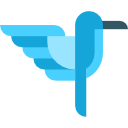Flutter未定义功能插件dash的使用
Flutter未定义功能插件dash的使用
Dash简介

Dash是一个简单但高效的库,它提供和释放BloCs类而无需担心复杂的配置问题。
重要提示:使用此包需要Dart2。
安装
1. 添加dash到你的pubspec.yaml文件中的依赖项部分:
dependencies:
dash: ^latest_version
2. 添加build_runner和dash_generator到你的pubspec.yaml文件中的开发依赖项部分:
dev_dependencies:
build_runner: ^2.0.3
dash_generator: ^latest_version
使用方法
1. 创建一个提供者类,该类将收集所有带有BlocProvider注解的类:
重要提示:不要忘记添加part 'provider.g.dart';。
import 'package:dash/dash.dart';
part 'provider.g.dart';
@BlocProvider.register(MySampleBloc)
@BlocProvider.register(MyOtherBloc)
abstract class Provider {}
2. 所有的Bloc类都应继承自Bloc。这将允许你重写dispose方法。
重要提示:所有的Bloc类必须有一个instance()函数,返回Bloc类的实例,如下所示。
class MySampleBloc extends Bloc {
@override
dispose() {
//关闭所有流
}
static Bloc instance() => MySampleBloc();
}
class MyOtherBloc extends Bloc {
@override
dispose() {
//关闭所有流
}
static Bloc instance() => MyOtherBloc();
}
3. 运行build_runner,它将生成你在提供者类中作为部分添加的provider.g.dart类。
在项目目录下运行以下命令:
- 对于普通Dart项目:
pub run build_runner build - 对于Flutter项目:
flutter packages pub run build_runner build
注意: 如果遇到冲突错误,请向命令中添加--delete-conflicting-outputs参数:
flutter packages pub run build_runner build --delete-conflicting-outputs
4. 最后,你可以从任何地方获取Bloc类的实例,例如:
@override
Widget build(BuildContext context) {
final _bloc = $Provider.of<MyOtherBloc>();
return Container();
}
@override
void dispose() {
$Provider.dispose<MyOtherBloc>();
super.dispose();
}
示例代码
以下是完整的示例代码,展示了如何使用Dash来管理状态:
import 'package:dash/dash.dart';
import 'package:flutter/material.dart';
import 'package:rxdart/rxdart.dart';
void main() => runApp(MyApp());
class MyApp extends StatelessWidget {
@override
Widget build(BuildContext context) {
return MaterialApp(
title: 'Dash Demo',
theme: ThemeData(
primarySwatch: Colors.blue,
),
home: MyHomePage(title: 'Flutter and Dash Home Page'),
);
}
}
// Bloc 类
class MyHomeBloc extends Bloc {
static MyHomeBloc instance() => MyHomeBloc();
final _counter = BehaviorSubject<int>.seeded(0);
Stream<int> get counter => _counter.stream;
Function(int) get updateCounter => _counter.sink.add;
void increment() => updateCounter((_counter.value ?? 0) + 1);
@override
void dispose() {
_counter.close();
}
}
// 提供者类
part 'provider.g.dart';
@BlocProvider.register(MyHomeBloc)
abstract class Provider {}
// 主页
class MyHomePage extends StatefulWidget {
MyHomePage({required this.title});
final String title;
@override
_MyHomePageState createState() => _MyHomePageState();
}
class _MyHomePageState extends State<MyHomePage> {
final _bloc = $Provider.of<MyHomeBloc>();
@override
void dispose() {
$Provider.dispose<MyHomeBloc>();
super.dispose();
}
@override
Widget build(BuildContext context) {
return Scaffold(
appBar: AppBar(
title: Text(widget.title),
),
body: Center(
child: Column(
mainAxisAlignment: MainAxisAlignment.center,
children: <Widget>[
Text(
'You have pushed the button this many times:',
),
StreamBuilder<int>(
stream: _bloc.counter,
builder: (context, snap) => snap.hasData
? Text(
'${snap.data}',
style: Theme.of(context).textTheme.headline6,
)
: Text('loading...'),
),
],
),
),
floatingActionButton: FloatingActionButton(
onPressed: _bloc.increment,
tooltip: 'Increment',
child: Icon(Icons.add),
), // This trailing comma makes auto-formatting nicer for build methods.
);
}
}
通过上述步骤和示例代码,你应该能够成功地在Flutter项目中集成并使用Dash库进行状态管理。
更多关于Flutter未定义功能插件dash的使用的实战系列教程也可以访问 https://www.itying.com/category-92-b0.html
更多关于Flutter未定义功能插件dash的使用的实战系列教程也可以访问 https://www.itying.com/category-92-b0.html
在Flutter中,如果你遇到了一个未定义的插件(例如 dash),这通常意味着该插件没有被正确安装或者在你的项目中没有被正确引用。不过,基于我的知识库和Flutter的官方插件库,dash 并不是一个广为人知的官方插件。因此,我假设你可能是指某个自定义插件或者第三方插件。
下面我将展示如何在Flutter项目中安装和使用一个假设的第三方插件。由于dash这个具体名称不是官方的,我将以一个常见的Flutter插件 path_provider 作为示例,你可以按照类似的过程来处理你的dash插件(如果它存在的话)。
步骤 1: 添加依赖
首先,你需要在你的 pubspec.yaml 文件中添加插件的依赖。对于 path_provider,依赖项看起来像这样:
dependencies:
flutter:
sdk: flutter
path_provider: ^2.0.9 # 确保使用最新版本号
如果你有一个名为 dash 的插件,你应该在 pubspec.yaml 中添加相应的依赖项(假设它存在于 pub.dev 上):
dependencies:
flutter:
sdk: flutter
dash: ^x.y.z # 替换为实际的版本号
步骤 2: 获取插件包
在 pubspec.yaml 文件中添加依赖后,运行以下命令来获取这些依赖包:
flutter pub get
步骤 3: 导入并使用插件
在你的 Dart 文件中,你需要导入并使用这个插件。以下是如何导入并使用 path_provider 插件的示例:
import 'package:flutter/material.dart';
import 'package:path_provider/path_provider.dart';
void main() {
runApp(MyApp());
}
class MyApp extends StatelessWidget {
@override
Widget build(BuildContext context) {
return MaterialApp(
home: Scaffold(
appBar: AppBar(
title: Text('Path Provider Example'),
),
body: Center(
child: FutureBuilder<String>(
future: _getApplicationDocumentsDirectory(),
builder: (context, snapshot) {
if (snapshot.connectionState == ConnectionState.done) {
if (snapshot.hasError) {
return Text('Error: ${snapshot.error}');
} else {
return Text('Application Documents Directory: ${snapshot.data}');
}
} else {
return CircularProgressIndicator();
}
},
),
),
),
);
}
Future<String> _getApplicationDocumentsDirectory() async {
final directory = await getApplicationDocumentsDirectory();
return directory.path;
}
}
对于你的 dash 插件(如果它存在并且提供了类似的功能),你可以按照类似的模式导入并使用它:
import 'package:dash/dash.dart'; // 假设这是正确的导入路径
// 然后你可以使用 Dash 插件提供的功能
注意
- 确保
dash插件确实存在于pub.dev上或者它是一个你已经正确添加到你的项目中的本地插件。 - 如果
dash是一个自定义插件或者私有插件,你可能需要通过其他方式(如 Git 仓库)来添加依赖。 - 如果
dash插件不存在或者你没有正确的访问权限,你可能需要联系插件的开发者或者寻找一个替代的插件。
希望这能帮助你理解如何在 Flutter 项目中安装和使用插件。如果你有关于 dash 插件的具体问题或者它实际上是一个你正在开发的插件,你可能需要提供更多的上下文才能得到更具体的帮助。








